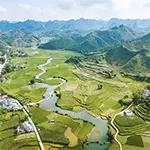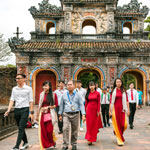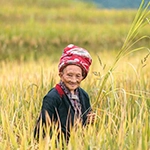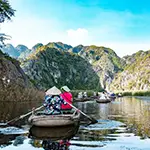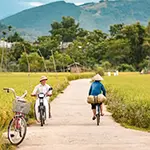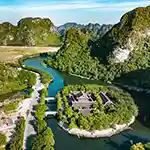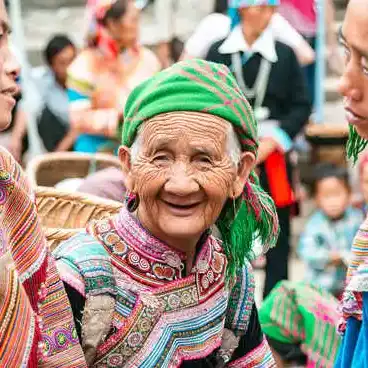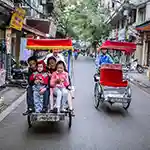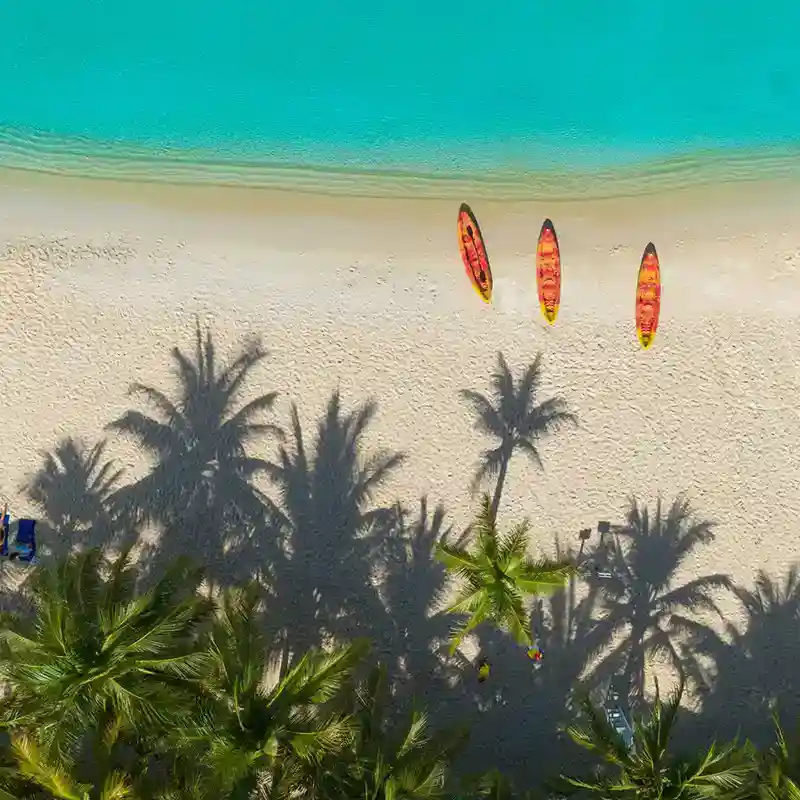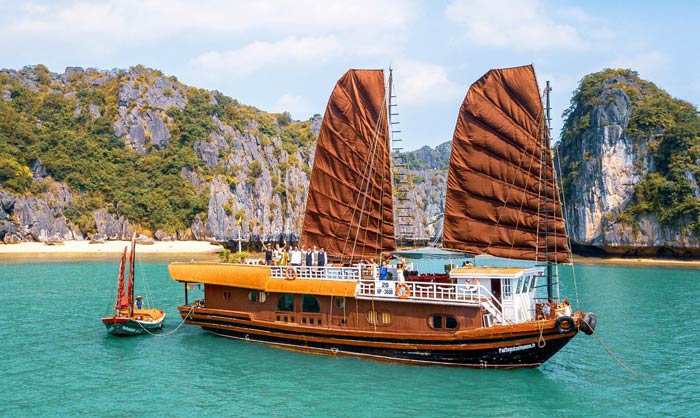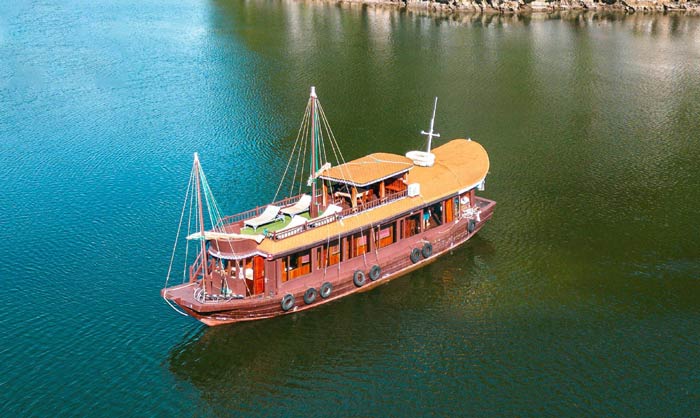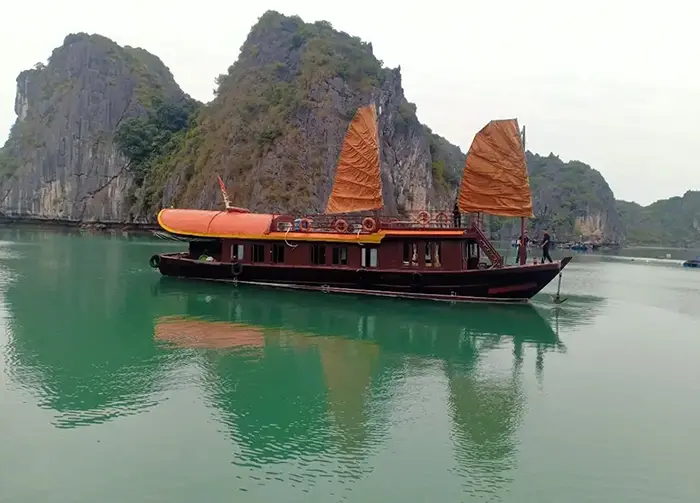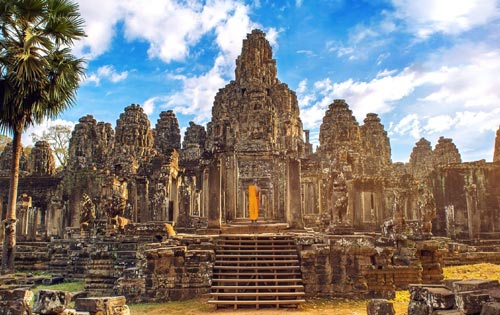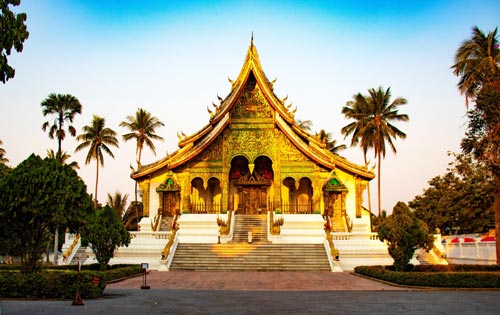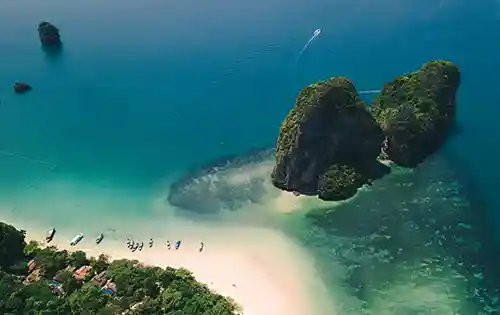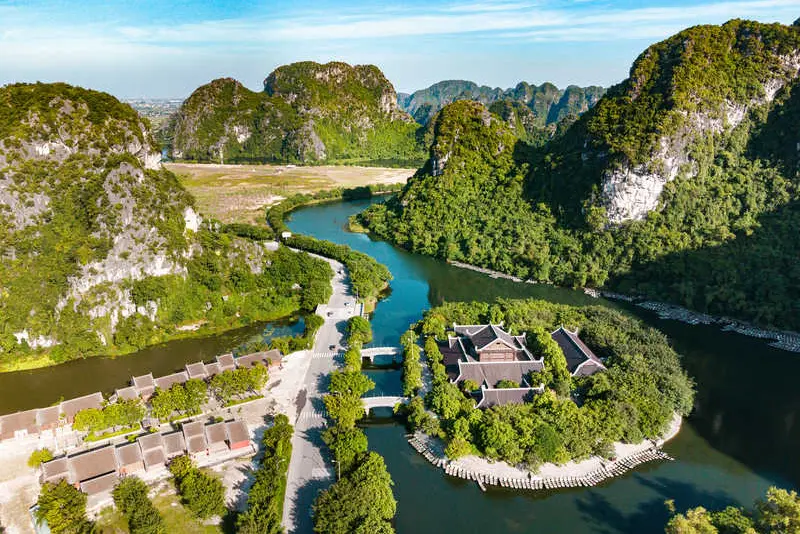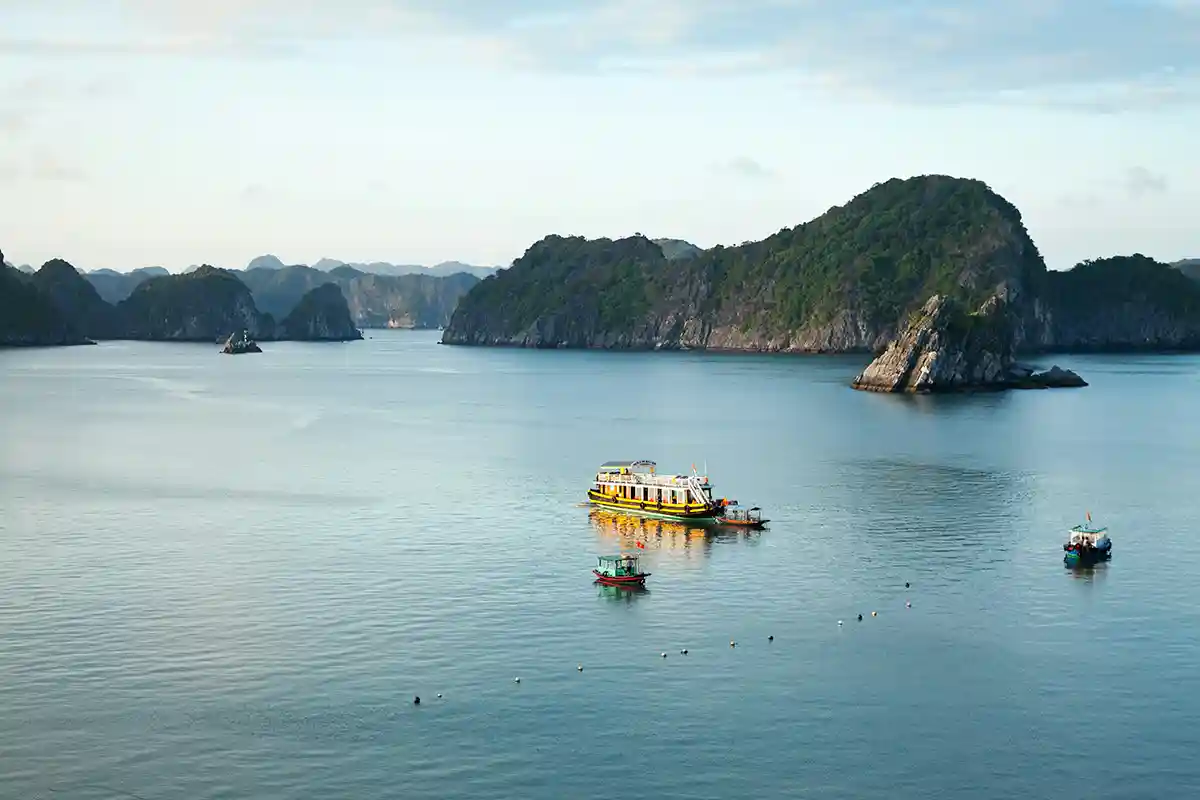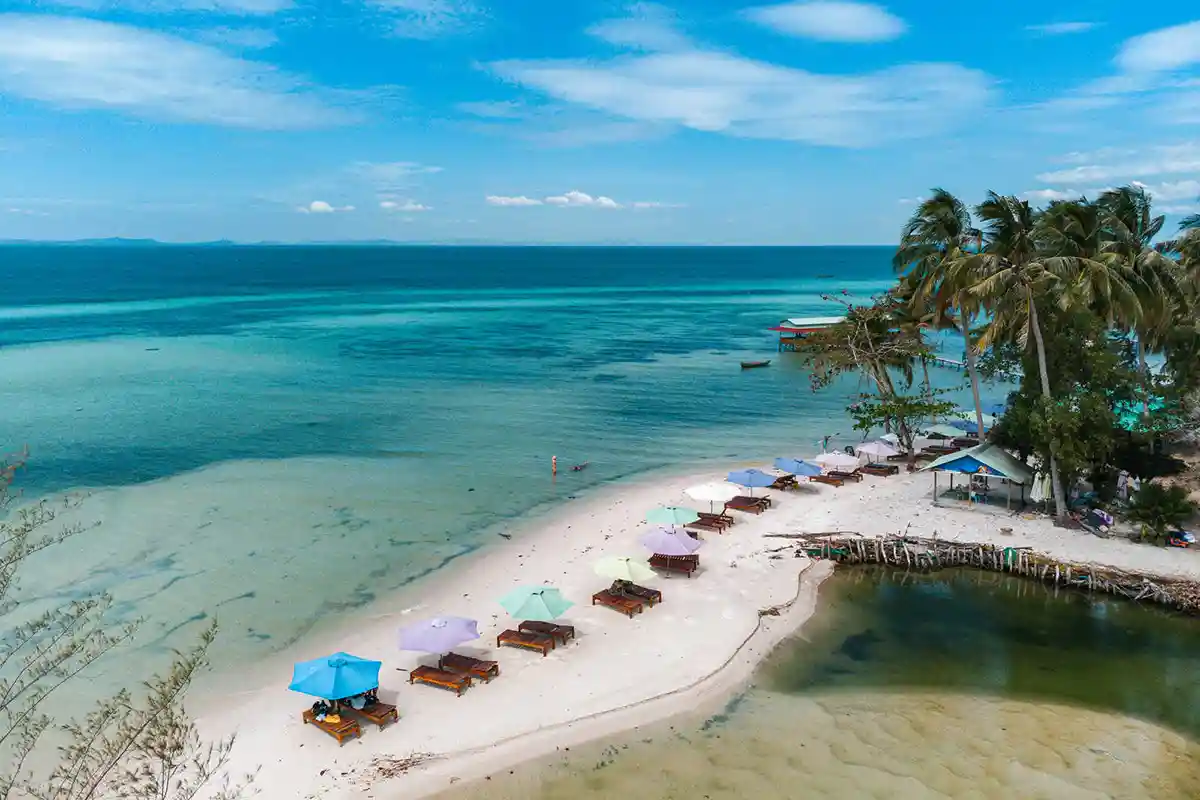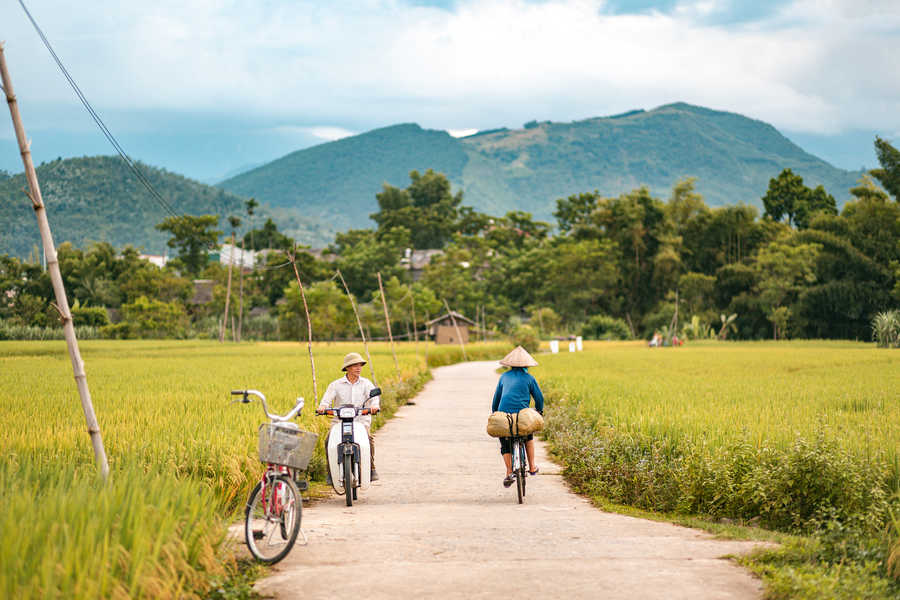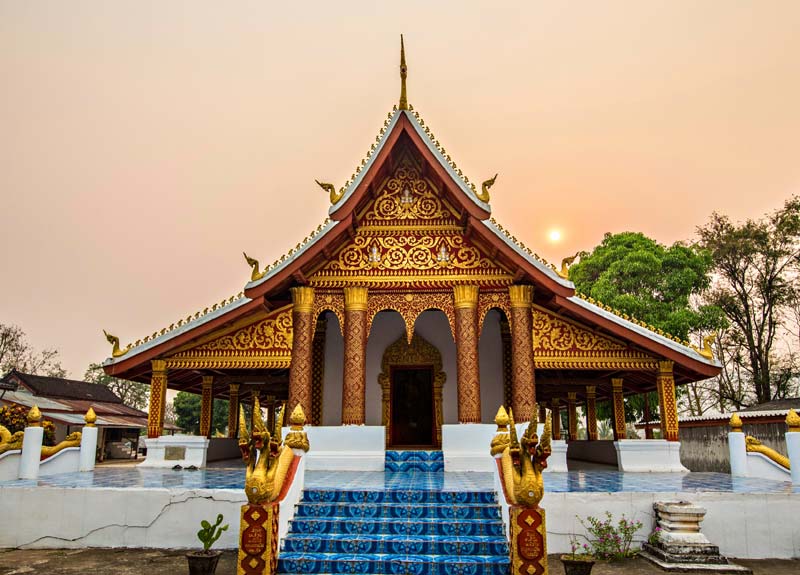・Vietnam Must-see・
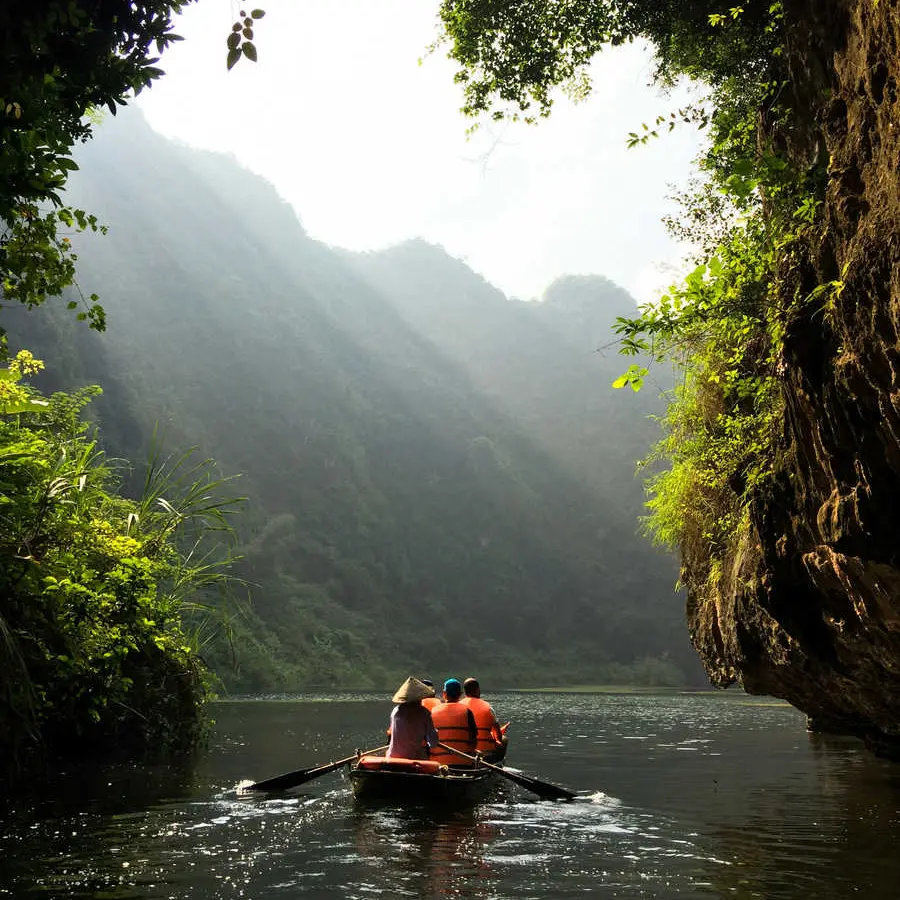
Set off to discover the must-see destinations that make Vietnam so renowned, with tours spanning from the North to the South of the country.
These itineraries are ideal for a first-time discovery of Vietnam.
All our tours are private, designed for travelers who want to explore Vietnam in a personalized way, guided by French-speaking experts who share the country’s traditions and customs with passion.
Browse our suggested itineraries below and contact us to tailor your own unforgettable journey!
Our Tour Packages to Discover Vietnam’s Must-Sees
Discover Vietnam in 15 Days: Lan Ha Bay, Mu Cang Chai, Hue and Hoi An, Authentic Immersion in the Mekong Delta
Vietnam in 21 Days – The Complete Journey: Lan Ha Bay, Mu Cang Chai Rice Terraces, Sapa, Hue, Hoi An, the Mekong, from North to South
21-Day Vietnam Tour: Mu Cang Chai Rice Terraces, Lan Ha Bay Cruise, Mekong Delta, and Beach Relaxation in Phu Quoc
A comprehensive 15-day tour exploring Northern Vietnam and its spectacular landscapes: terraced rice fields, the Ha Giang loop, Halong Bay…
Vietnam and the Must-Sees of Cambodia in 20 Days: Lan Ha Bay, Mu Cang Chai, Hoi An, Mekong, Phnom Penh, and Angkor
In 18 days: Lan Ha Bay, Ninh Binh, Pu Luong, Sapa, and a visit to Luang Prabang with its waterfalls and ancient temples**
Why travel to Vietnam ?
Si vous n’êtes jamais venu au Vietnam, vous hésitez peut-être avec d’autres destinations, comme la Thailande ou le Cambodge. Nous vous disons ci-dessous nos 5 bonnes raisons de venir nous visiter au Vietnam.
Beauty and Diversity of Landscapes

Vietnam stretches over 2,000 kilometers in length, offering an extraordinary diversity of landscapes. With so many possibilities, countless themed journeys (authentic, cultural, seaside, and more) can be tailored to suit every traveler’s interests.
If you’re drawn to authenticity and walking, you can go trekking in Northern Vietnam and climb mountains such as Mount Fansipan, which rises to 3,143 meters. You’ll also have the chance to admire breathtaking terraced rice fields during homestay immersion experiences.
Prefer sunshine and palm trees? Vietnam boasts a long and beautiful coastline. While its beaches are less famous than those of Thailand, they are truly worth discovering! In spring, summer, and autumn, you can even swim in the iconic Halong Bay.
A multicultural country
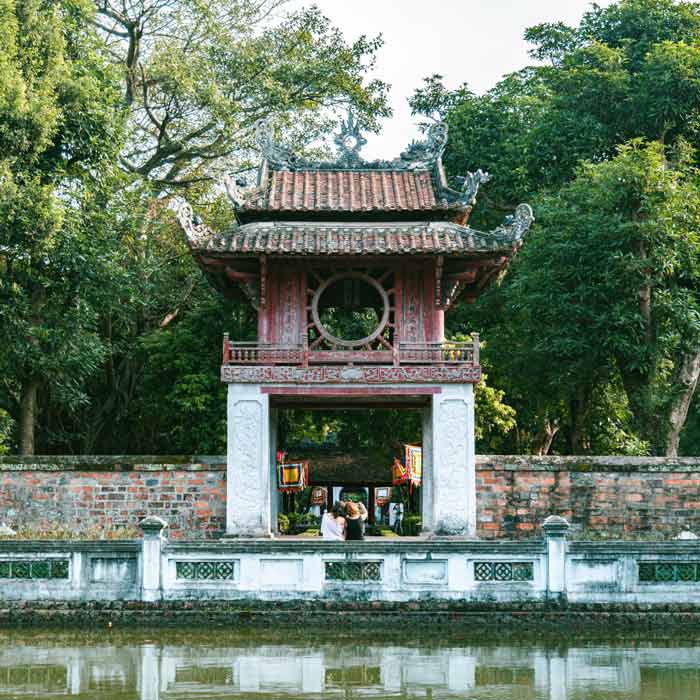
At first glance, Vietnam may seem quite uniform, with the Kinh ethnic group forming the vast majority and a single language spoken by everyone. In reality, however, the country is very diverse: 54 ethnic groups currently live on Vietnamese soil. A visit to the Museum of Ethnology in Hanoi will teach you a great deal about their histories and traditions. This will prepare you to explore Northern Vietnam with your guide and meet the local communities.
We strongly recommend spending at least one night with a host family belonging to an ethnic minority. This unique experience will allow you to discover the inside of a traditional home and gain a real insight into the way people live. This is one of the highlights we include in all our tailor-made tours.
A warm welcome

All of Vietnam’s ethnic groups share a culture of hospitality. People will be proud to invite you for tea or even to share a meal with them. After long years of war and political isolation, since the 1990s, the Vietnamese have embraced new opportunities and opened themselves to the world.
Beyond hospitality, the Vietnamese also have a strong culture of sharing. This is especially visible during meals, when all the dishes are placed on the table (or mat) at the same time for everyone to enjoy. But it is also part of everyday life: people won’t hesitate to offer you fruit or food, even if you are complete strangers. So set off with peace of mind—you will be warmly welcomed in Vietnam!
Vietnamese food, a delight

Vietnamese food is renowned for being balanced and healthy—and this reputation is well deserved!
Fresh vegetables are part of nearly every dish, and sauces are used sparingly, as are chilies. Don’t be afraid to eat in small street stalls: that’s often where you’ll find the best meals! These dishes are prepared in the traditional, home-style way rather than industrially.
The Vietnamese are also slim for another reason: their way of eating and sharing a meal. It has been shown that using chopsticks, eating a variety of dishes, and sharing them slows down the pace of eating considerably and allows for better digestion!
Outstanding value for money

Vietnam is also attractive thanks to its low cost of living. Your international flight will most likely be your biggest expense!
In Vietnam, you can enjoy street food (of very good quality, as we’ve just seen) for only 2 or 3 euros… You’ll also find quality hotels (3 stars) at hostel prices compared to France! And if you are looking for beaches, it was shown in 2023 (source: Travel Bird) that a day at the beach in Central and Southern Vietnam is simply the cheapest in the world! On average, you would only need to spend around 2 euros for all the essentials (drink, sunscreen, etc.—hotel not included!) to enjoy a day by the sea.
Looking to plan a private, tailor-made journey?
The 10 must-see tourist sites in Vietnam
If you are visiting Vietnam for the first time, you will of course want to see the most beautiful and famous sites that make the country so renowned. Here is a selection of 10 places we recommend for a first discovery of Vietnam.
Halong bay

If there were only one place to see in Vietnam, it would undoubtedly be Halong Bay!
Located in the Gulf of Tonkin, about 170 kilometers from Hanoi, the bay offers a breathtaking natural landscape. What makes it so special? The multitude of rocky limestone peaks—around 1,600 of them—rising majestically from the water. Over time, many of these peaks have been hollowed out to form caves, some of which reveal stunning hidden lakes. Halong Bay is, of course, the most famous site in Vietnam and is listed as a UNESCO World Heritage Site.
To enjoy this experience in the best possible way, we recommend taking a cruise on a traditional junk boat in Lan Ha Bay. This part of Halong Bay is much quieter than the main area, which today hosts far too many boats.
Ninh Binh, "Halong bay on land"
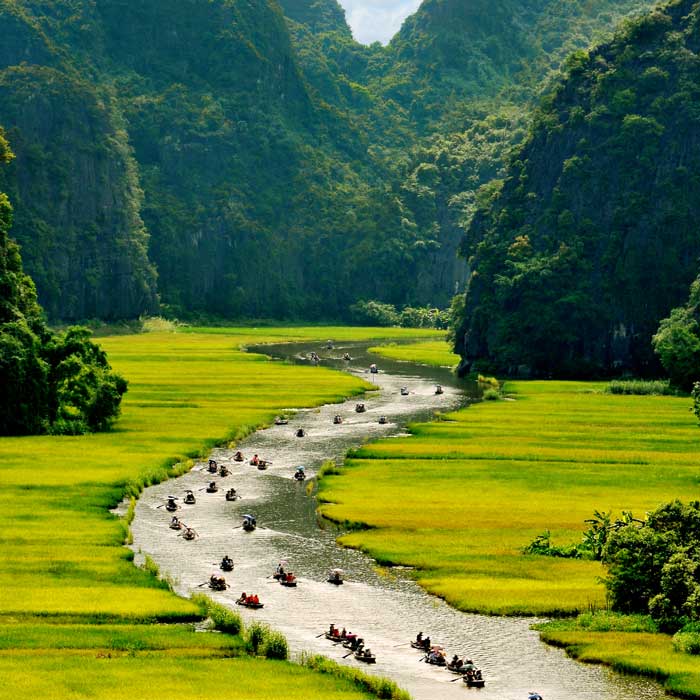
Contrary to what its nickname (“Halong Bay on land”) might suggest, Ninh Binh is not located near Halong Bay. In fact, it takes about 3 hours by road to reach Ninh Binh from the city of Halong, and the new highway has greatly improved the journey.
Here, you will once again be greeted by the same karst peaks you admired in Halong Bay—only this time, they rise from the ground instead of the sea. It’s just as impressive, and wonderfully peaceful! Several remarkable sites are worth visiting, such as Trang An (a UNESCO World Heritage Site), Tam Coc (with its river lined by rice fields), and Van Long and Thung Nham (two less-visited but equally charming spots).
You can also explore Vietnam’s ancient capital, Hoa Lu, visit the vast Buddhist complex of Bai Dinh, or simply go cycling through the surrounding countryside, stopping at centuries-old pagodas along the way.
Sapa and villages around
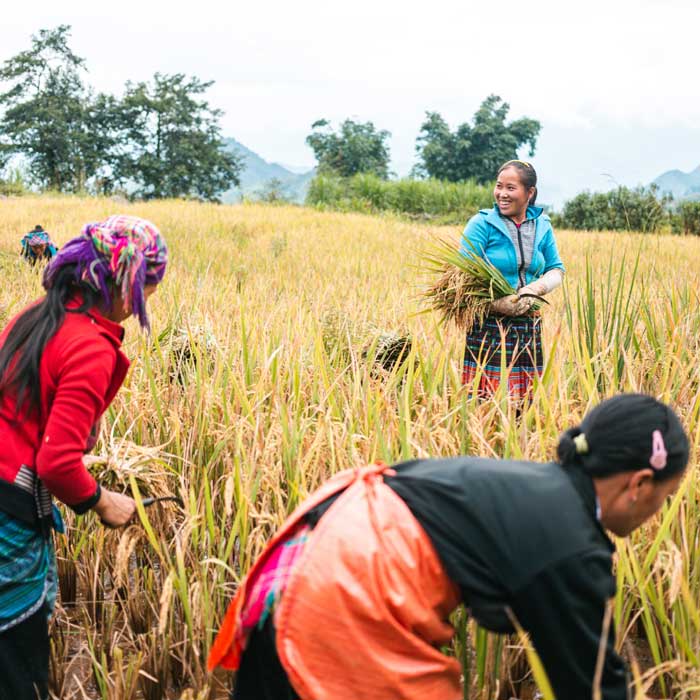
Sapa is a town located in Lao Cai Province, on the Chinese border in Northern Vietnam. It was first developed by the French colonial authorities at the beginning of the 20th century as a summer retreat for French officials stationed in Vietnam to escape the intense tropical heat. Home to many mountain ethnic groups, especially the Hmong, the town gradually also welcomed the majority Kinh population.
Lao Cai Province is home to the highest peaks in Vietnam, including Mount Fansipan, which rises to 3,143 meters. Traveling to Sapa and trekking in the surrounding area means encountering indigenous peoples, particularly the Hmong, who have lived in these regions for countless generations. It also means being dazzled by the beauty of the landscapes, especially the terraced rice fields carefully shaped by the hands of the mountain people.
The town of Sapa itself has little charm, increasingly disfigured by chaotic construction. However, the surrounding landscapes and local life still make it well worth the trip. On foot, you can explore villages such as Lao Chai, Ta Van, and Giang Ta Chai. If you rent a car or motorbike, we recommend heading towards Y Ty, a small village on the Chinese border. The scenery along the road is stunning, and you’ll encounter very few tourists there…
Ban Gioc waterfall
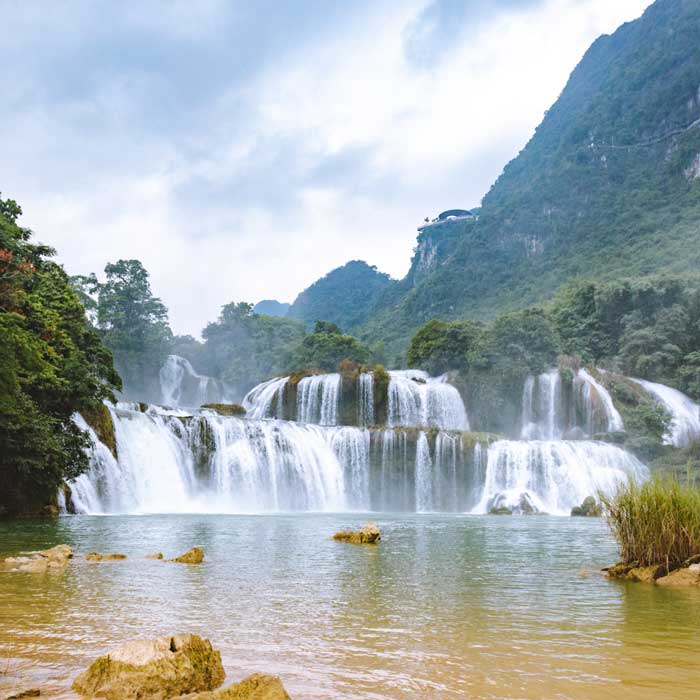
Ban Gioc is a magnificent waterfall that also marks the border between China and Vietnam. On the Vietnamese side, it is located in Cao Bang Province, at the country’s far northeast. This is the widest waterfall in Vietnam—stretching no less than 300 meters across! The waters of the Quay Son River drop dramatically from a height of over 30 meters. It is certainly one of the most impressive natural sights in Vietnam. Once there, you can take a small bamboo raft (50,000 VND) that brings you right up close to the falls—be prepared to get wet!
The waterfall is not the only attraction in the area. Just a few kilometers before reaching it, you’ll find the Nguom Ngao caves, which are both spectacular and well-developed for visitors.
Phong Nha Ke Bang caves

Phong Nha–Ke Bang National Park is still not part of the classic travel itineraries, and yet… it is home to some of the most beautiful and largest caves in the world! The park is now well developed, and the local authorities are aiming to make it one of Asia’s leading adventure tourism destinations.
There are two main ways to visit the national park:
The classic way
You can stay in a hotel within the park and visit the most accessible caves, such as Paradise Cave and Phong Nha Cave, which is explored by small boat. Accessible doesn’t mean uninteresting—far from it! You will be amazed by the natural wonders and the history revealed inside Paradise Cave.
The adventurous way
You can choose from several excursions that combine trekking with caving and canyoning inside the caves. If you are in good physical condition and want to combine sightseeing, discovery, and sport, this is the perfect option for you!
Hue and the Imperial City

Hue is the main city of Thừa Thiên-Huế Province, located in Central Vietnam. It was here that the Nguyen dynasty built its Imperial City in the 19th century. The city flourished, gaining a strong artistic and intellectual reputation, until the arrival of French troops in the 1880s. Much of the Imperial City was destroyed, and many valuable treasures—such as furniture and manuscripts—were stolen or burned. Later, the wars of independence, first against the French and then against the Americans, further devastated Hue’s cultural and historical heritage.
Fortunately, in recent years, major restoration efforts have been undertaken, and today it is once again possible to stroll through an Imperial City that has regained much of its former splendor!
Bana Hills and the golden bridge in Da Nang

This bridge has enjoyed tremendous popularity since its opening in June 2018.
The bridge is part of the Ba Na Hills tourist complex, located atop the Truong Son mountains near Danang. In search of cooler air during the tropical summer heat, French colonial troops established a hill station here starting in 1919.
In the early 2010s, Sun Group, a company specializing in amusement parks, decided to develop the area into a site with multiple attractions. The first was the Ba Na Cable Car (2013), which remains the world’s longest nonstop cable car to this day (5,801 meters). The Golden Bridge is the latest addition, connecting the cable car station with various gardens. What earned it international fame, however, is its striking architecture (drone photos of it spread worldwide). Chief architect Mr. Vu Viet Anh designed two giant stone hands placed in such a way that they appear to be holding the bridge.
An architectural feat and a remarkable publicity success that has put Vietnam in the global spotlight!
Hoi An
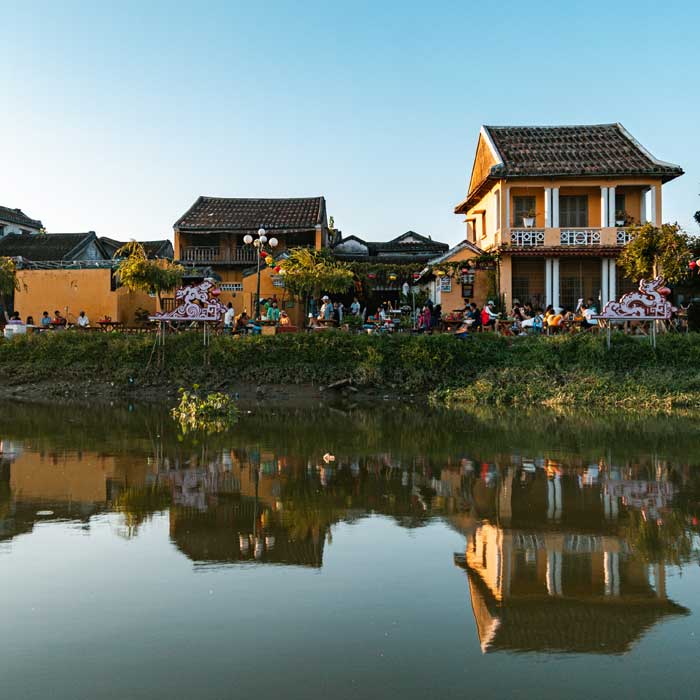
Hoi An is a small town located in Quảng Nam Province, about 30 kilometers from Da Nang.
Once a thriving fishing port well known to silk traders from the 15th century onward, Hoi An was influenced by many cultures, traces of which can still be seen in the architecture of its old town. Listed as a UNESCO World Heritage Site since 1999, the old town features no fewer than 844 registered historic buildings. Of course, you probably won’t have the time—or patience—to visit them all! Still, several are absolute must-sees: the Japanese Covered Bridge, built in 1593 to connect the city’s Japanese and Chinese quarters; Tan Ky House, the oldest in Hoi An and the first to be listed as a Historical Monument in 1985; and Phuc Kien Pagoda, once the gathering place for the Fujian community.
Beyond these monuments, simply strolling through the old town is an experience not to be missed—by day, to admire the colorful façades, and at nightfall, to marvel at the glow of its lanterns.
My Son Sanctuary
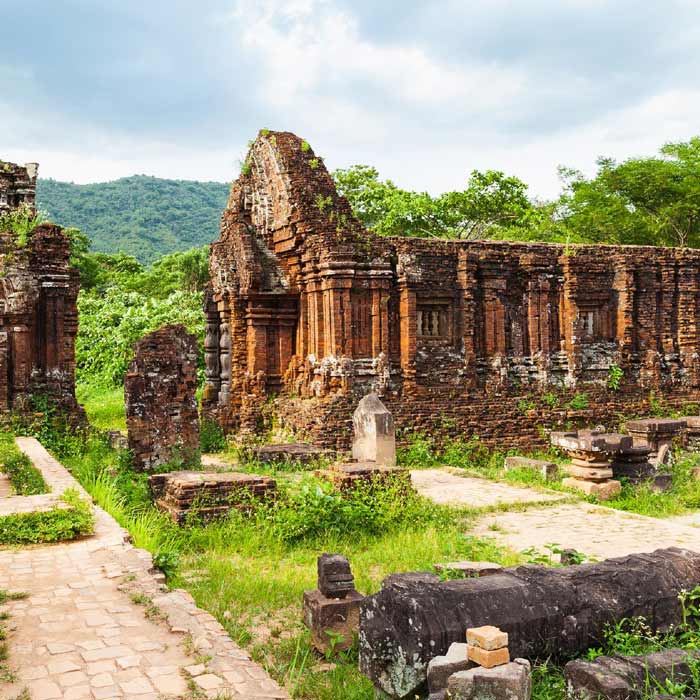
Located 30 km west of the small town of Hoi An in Central Vietnam, the My Son Sanctuary is the main archaeological site of the Cham civilization, which lasted from the 4th to the 13th century.
Culturally and spiritually rooted in the Indian subcontinent and Hinduism, the Cham built numerous temples in honor of Hindu deities such as Krishna, Vishnu, and above all Shiva. My Son was the religious heart of this civilization.
By visiting this sanctuary, you will discover 10 centuries of history that once flourished along the Vietnamese coast. The site was inscribed as a UNESCO World Heritage Site in 1999.
Cu Chi tunnels
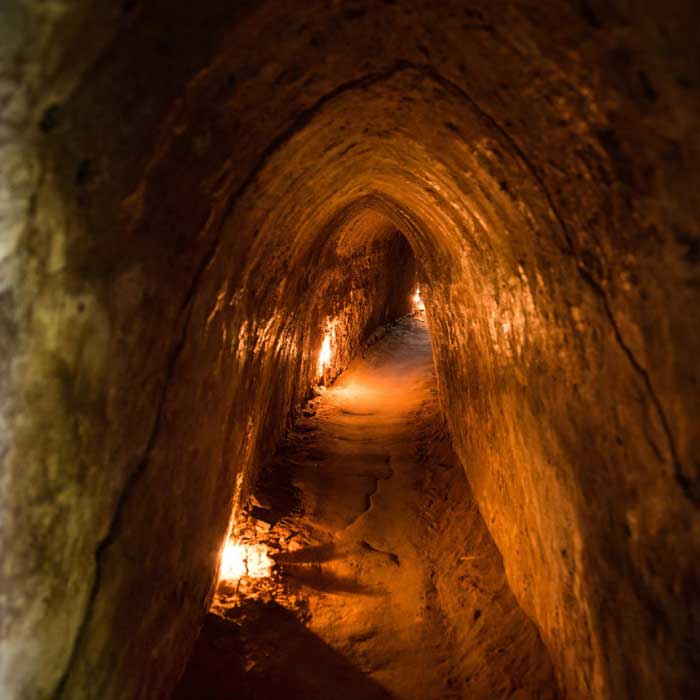
Cu Chi is a district on the outskirts of Ho Chi Minh City, home to the tunnels once used by Viet Minh soldiers during the wars against the French and, above all, the Americans.
These tunnels allowed Vietnamese resistance fighters to hide from American attacks and prepare their assaults. Several times, the U.S. Army bombed the Cu Chi area and sent soldiers underground—so-called “tunnel rats”—to try to gather intelligence. In 1967, they succeeded in uncovering the Viet Minh headquarters in Cu Chi, where more than 500,000 documents were found! Still, this was not enough, and the Cu Chi Tunnels remain a powerful symbol of the ingenuity and sacrifice of Vietnamese soldiers in their fight against the “invader.”
At the end of the war, the Vietnamese Communist Party decided to preserve and develop two tunnel complexes stretching over 120 km. Today, parts of the tunnels have been reconstructed and adapted to welcome visitors.

